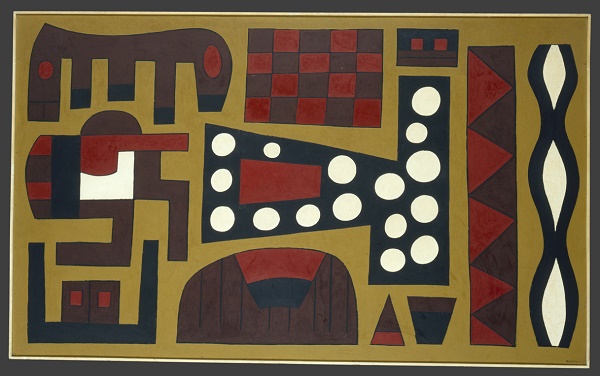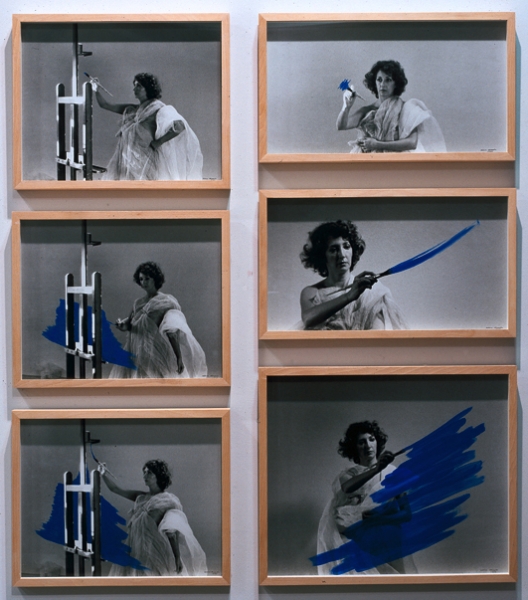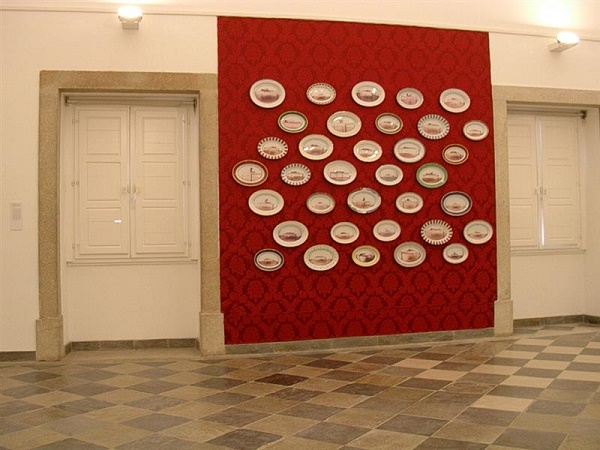
Joaquim Rodrigo, SA Estaçao, 1961
Lisbon’s Museo do Chiado has put forward an interesting initiative: under the title “Avant-garde and neo-avant-garde” (June 17, 2016 – June 17, 2017), it has elected to display the 20th– and 21st-century artworks of its collection, despite being almost exclusively known for its 19th-century pieces. However, at the risk of provoking my Portuguese friends’ outcries, I will say I was deeply bored visiting the rooms leading up to 1965. Not that I am not interested in movements like Futurism, Cubism, Surrealism or abstract art —far from it. But at the Chiado I saw mere adaptations, variations, imitations. I looked in vain for some unsettling, stimulating instances of creativity, only encountering earnest, well-rounded artworks that might have encapsulated what each of these movements were about, but that never really stood out on their own. (In the adjacent rooms, there is a dithyrambic exhibition on Amadeo de Souza-Cardoso, “greatest artist of the century,” a hidden gem finally revealed —like at the Grand Palais, I couldn’t appreciate it without taking into account the historical and cultural context.) Is this informed by Parisianocentric disdain for provincial follow-the-leader endeavors? Maybe, but then again I don’t have the same feeling of déjà-vu in front of Italian artists of this era, for instance.

Joaquim Rodrigo, Lisboa Oropeza, 1969
In the first four rooms, only Joaquim Rodrigo had my indulgence: instead of looking towards Paris, he drew inspiration from Angolan murals and Aboriginal art, creating graphic, simple, powerful canvases using only red, ochre, yellow and other earthy colors. (Also, I noticed in passing that, for whatever reason, Vieira da Silva is completely absent from this anthology, not even mentioned.)

Helena Almeida, Inhabited Painting, 1974
By contrast, what we see from the last third of the 20th-century is dazzling: even before the end of the dictatorship (is it related? probably), new artists appear, creating new forms, standing apart, and inventing their very own languages instead of duplicating those of Parisian or American elites. Among the first, Lourdes Castro and her friends from the exiled KWY group (three letters that did not exist —then— in the Portuguese alphabet), with her novel research on shadows and letters. Also, Helena Almeida and the way she commits her whole body to an art between photography and painting; Julião Sarmento and his elegant fascination for desire; Pedro Cabrita Reis and his mastery in using and occupying space; Jorge Molder and his melancholic variations on self-portraiture. Each of them belongs to global contemporary art, of course, but they all are unique in their own way, inventing their styles and discourses, without importing foreign fashions. (It should be noted that Joana Vasconcelos is not featured either…)

Ana Pérez-Quiroga, I Hate Being Fat, Eat Me Please, 2002
Finally, the last room features younger but similarly original artists: among others, I’ll only cite Vasco Araújo and his questioning of gender, Ângela Ferreira and her political interrogation of space, José Pedro Croft and his mastery of vernacular sculpture, João Pedro Vale and his humorous and gritty take on masculinity, or Ana Pérez-Quiroga with a superb feminist piece denouncing bourgeois habits of collecting decorative objects. Other artists, even younger, are not featured yet: for example, AnaMary Bilbao, Joana Escoval, Valter Ventura (who has a solo exhibition on the ground floor), but their turn soon will come. That being said, in my eyes, a fair amount of upcoming artists are now stuck in the same imitative posture that characterizes their early-20th-century precursors. From one Portuguese gallery or center for the arts to another, I encounter so many minimalist and formal artworks, reusing without any distance the current codes in effect around Chelsea or Belleville, and I struggle to find any originality in them.

Ana Pérez-Quiroga, I Hate Being Fat, Eat Me Please, 2002, detail
This is a partial point of view, coming out of curiosity rather than contempt, not hoping to be agreed with, maybe irksome to many —but this exhibition has given me the opportunity to crystallize the impressions (rather than peremptory judgments) I have collected these past two and a half years on the art of my adoptive country.
Read this article:
in the original French, alt.
in Spanish
Original publication date by Lunettes rouges: February 20, 2017.
Translation by Lucas Faugère
Pingback: L’art (portugais) commence en 1965 ? | lunettesrouges1
Pingback: Voulez-vous passer la nuit au Musée ? – lunettesrouges1